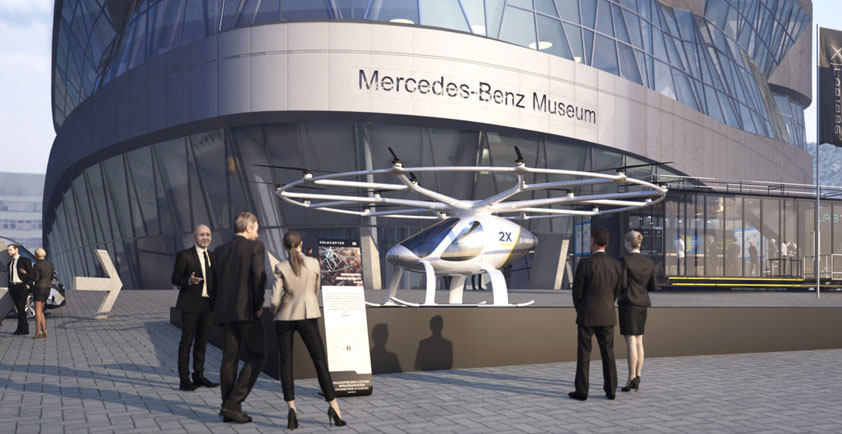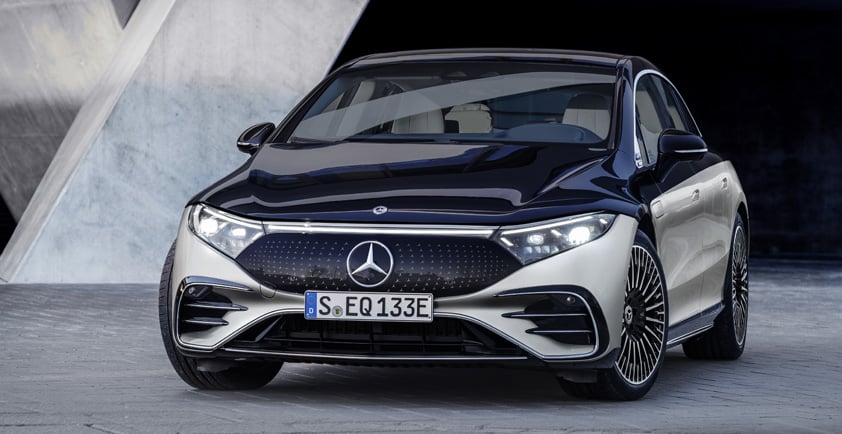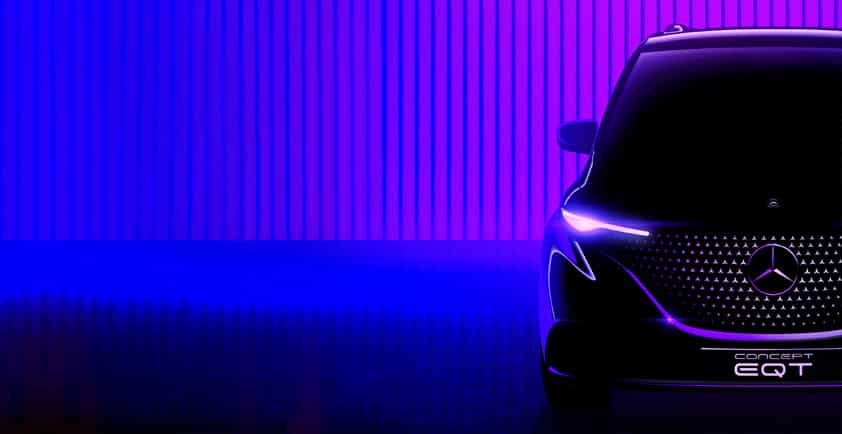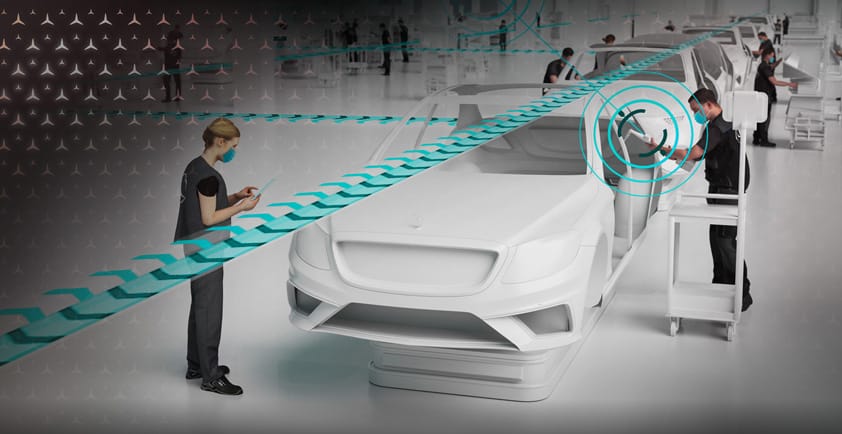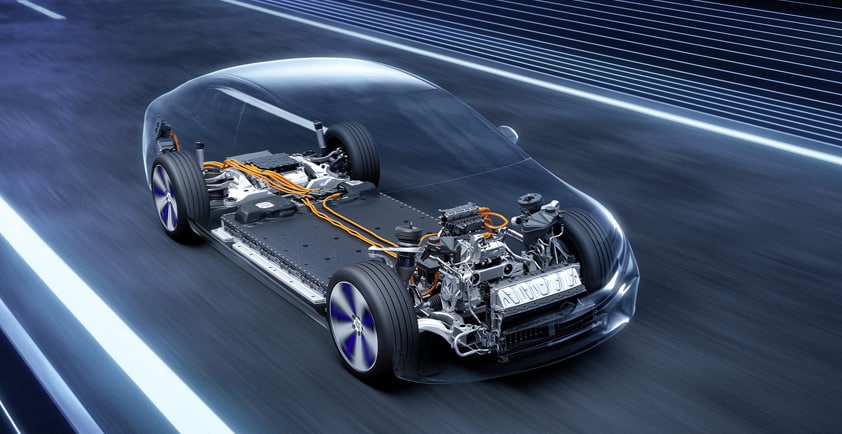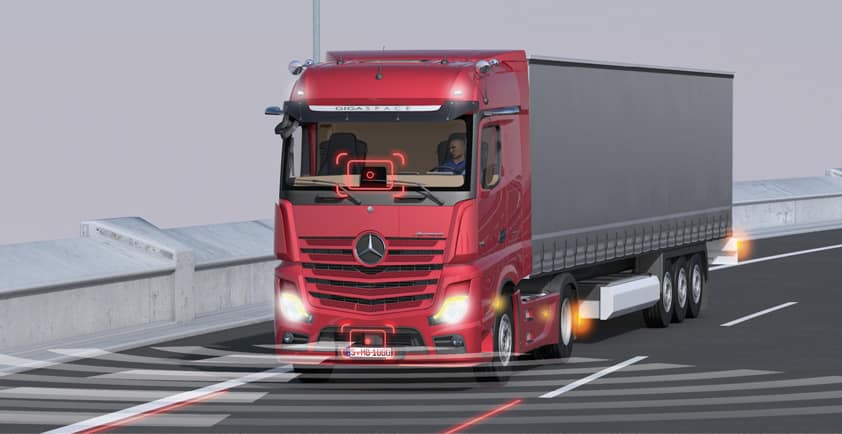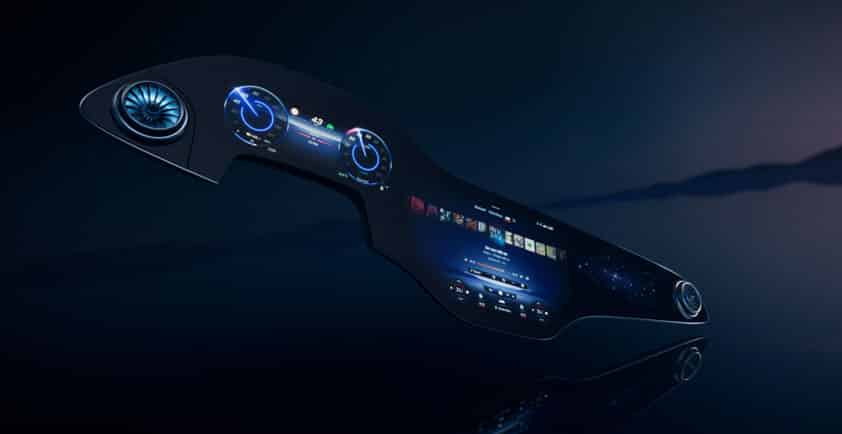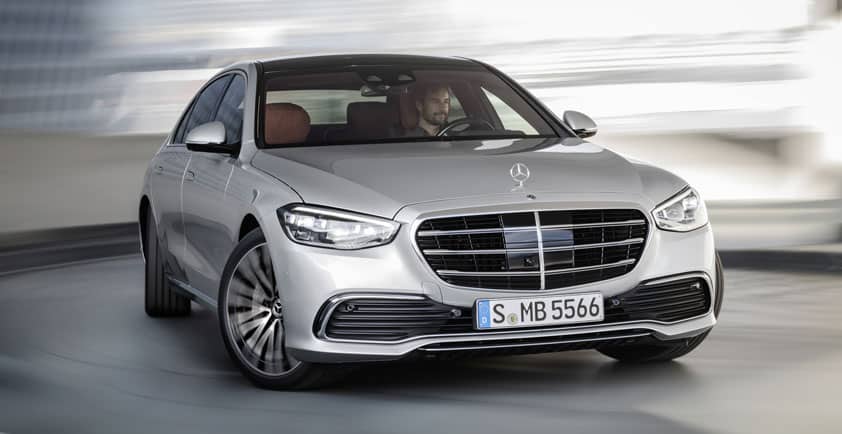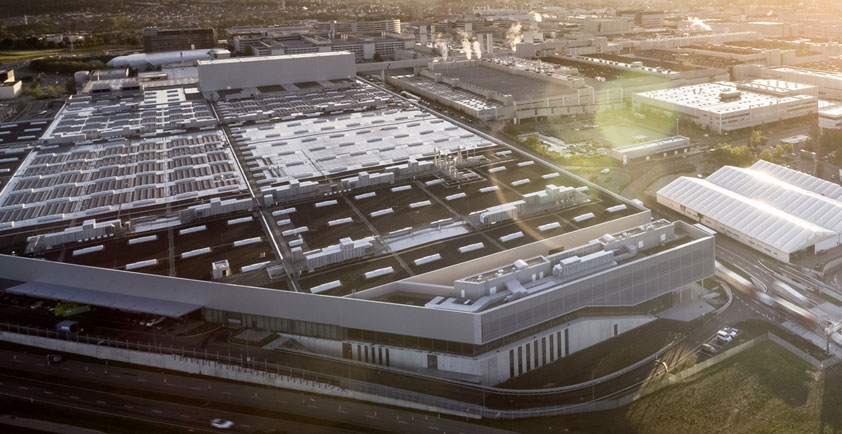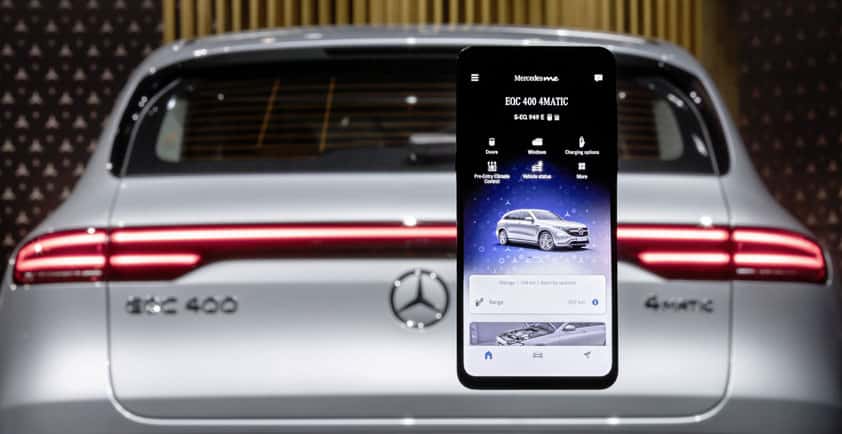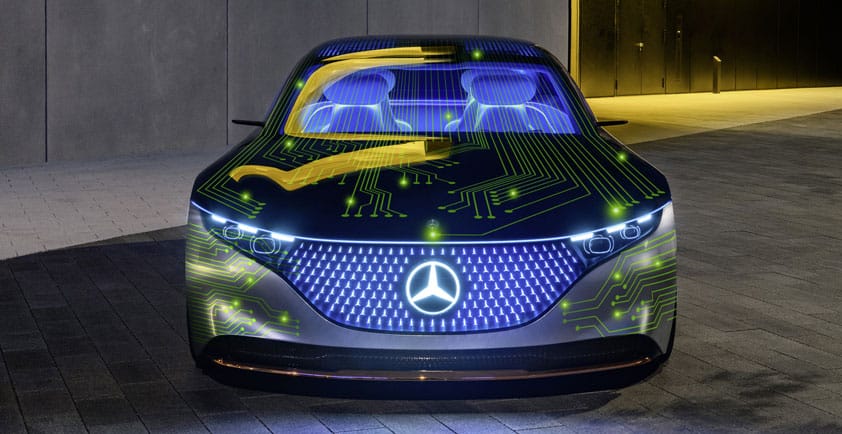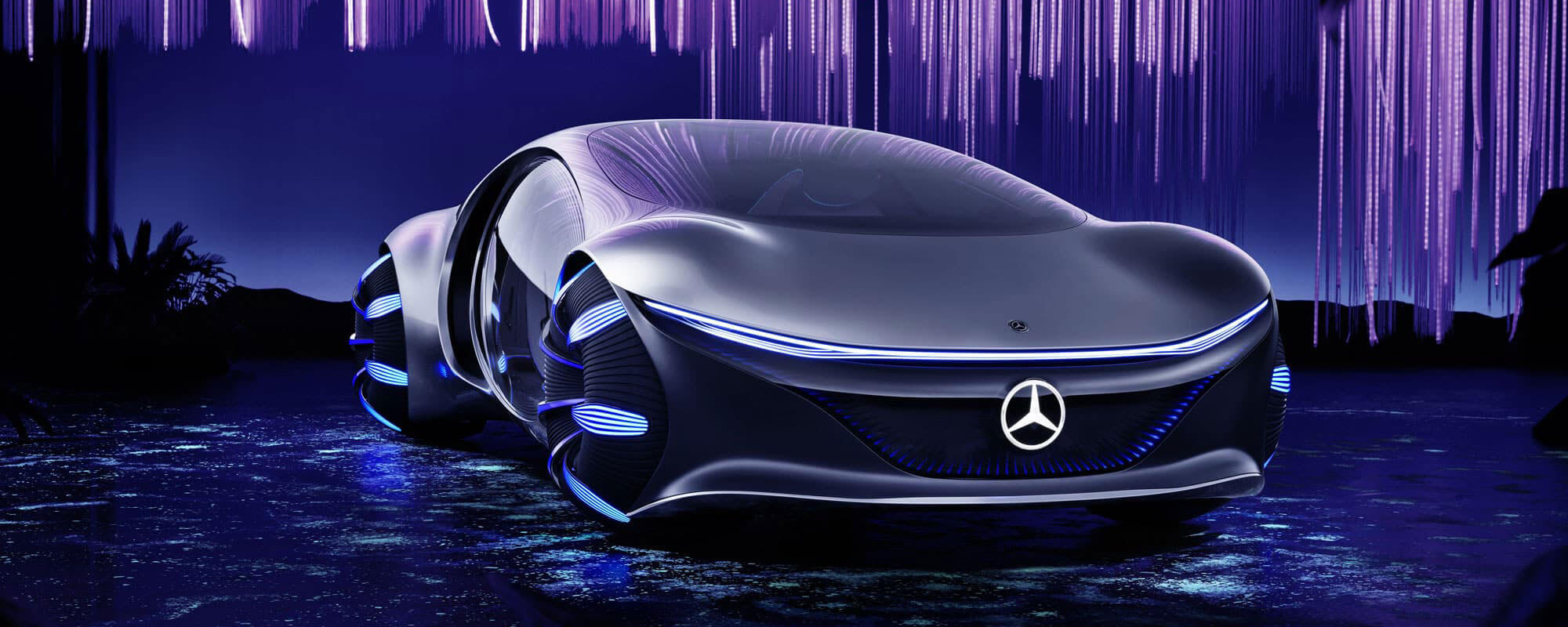
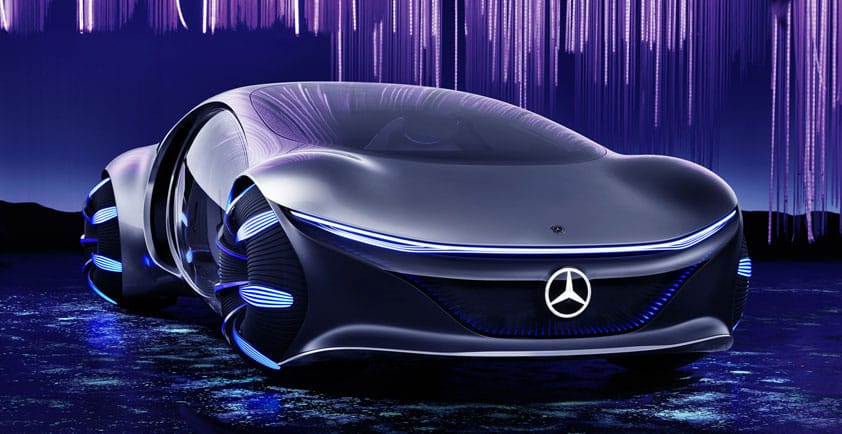
INSPIRED BY THE FUTURE: THE VISION AVTR
Mercedes-Benz VISION AVTR – inspired by AVATAR: The name of the groundbreaking concept vehicle stands not only for the close collaboration in developing the show car together with the AVATAR team but also for ADVANCED VEHICLE TRANSFORMATION. This concept vehicle embodies the vision of Mercedes-Benz designers, engineers and trend researchers for mobility in the distant future.
Mercedes-Benz VISION AVTR – inspired by AVATAR is the result of an unprecedented global partnership between one of the most innovative brands in the entertainment industry and the eighth most valuable brand in the world, Mercedes-Benz. Inspired by the world of Pandora – the VISION AVTR shows a completely new interaction between human, machine and nature.
The UX design – intuitive interaction
The UX designers from Mercedes-Benz shape the relationship between human and machine and vice versa. The focus is on the simplest and most intuitive operation by the user. An important motive is the self-determination of the user and the approach to use the entire interior for information. The goal is to display the right information at the right time – and only as long as it is actually needed.
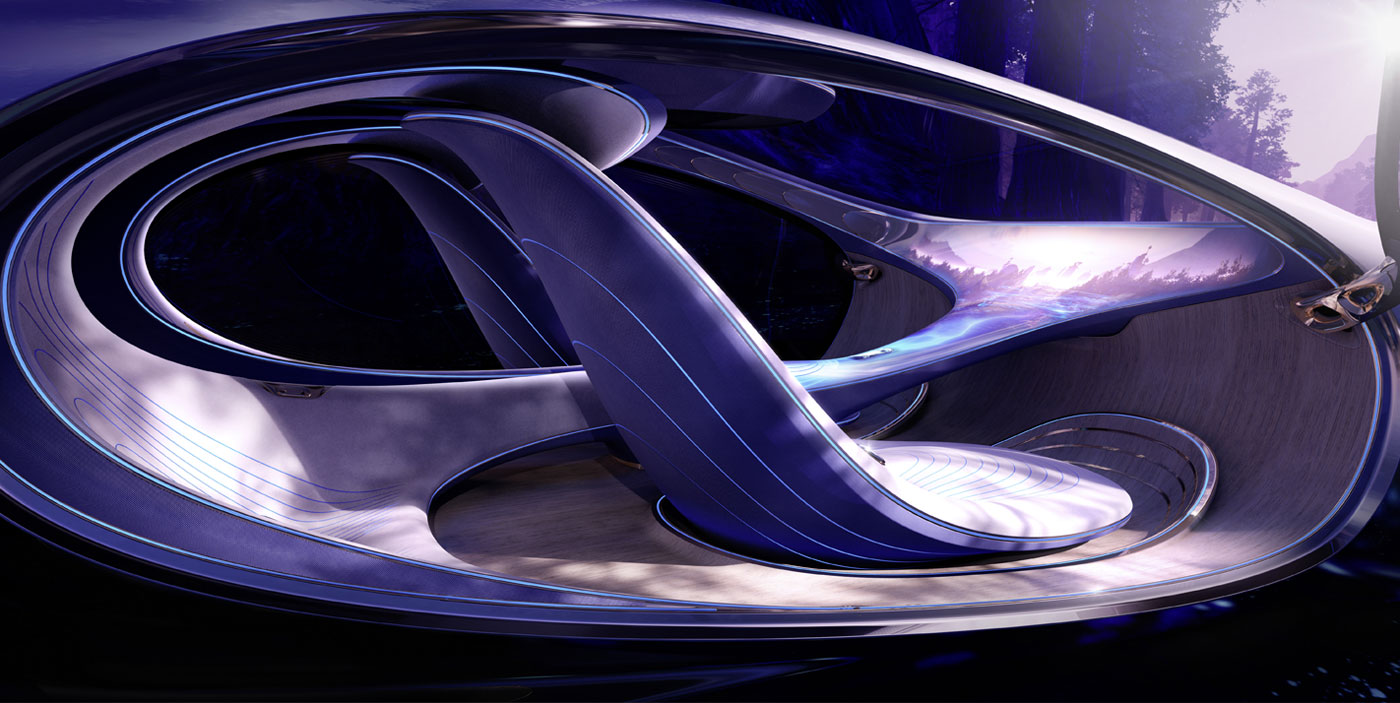
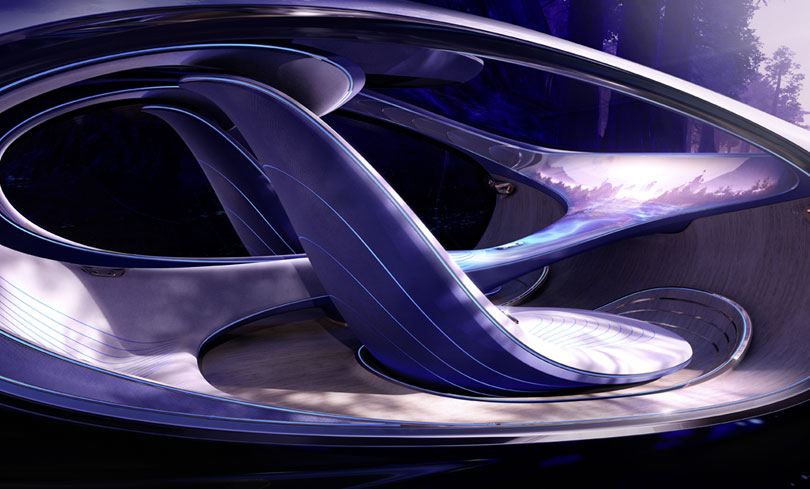
In the VISION AVTR, the Mercedes-Benz UX designers focus on the user experience in a completely new way. Inspired by the fictional world of Pandora from AVATAR, the VISION AVTR enables a previously unknown symbiosis of human, vehicle and surroundings. The result: a visionary vehicle that expands the senses of the occupants and increases their perceptual ability. As soon as the passengers take their seats in the VISION AVTR, they merge with the vehicle and can virtually feel and perceive the world around them even more consciously.
Intuitive control
The VISION AVTR already responds to the approach of the passengers by visualizing the energy and information flow of the environment with digital neurons that flow through the grill through the wheels to the rear area. The first interaction in the interior between man and vehicle happens completely intuitively via the control unit: By placing the hand on the center console, the interior comes to life and the vehicle recognizes the driver by his breathing. This is made visible on the instrument panel and on the user's hand. The VISION AVTR thus establishes a biometric connection with the driver and increases his awareness of the environment. The digital neurons flow from the interior into the exterior and visualize the flow of energy and information. For example, when driving, the neurons flow over the outside of the vehicle. When changing direction, the energy flows to the corresponding side of the vehicle.
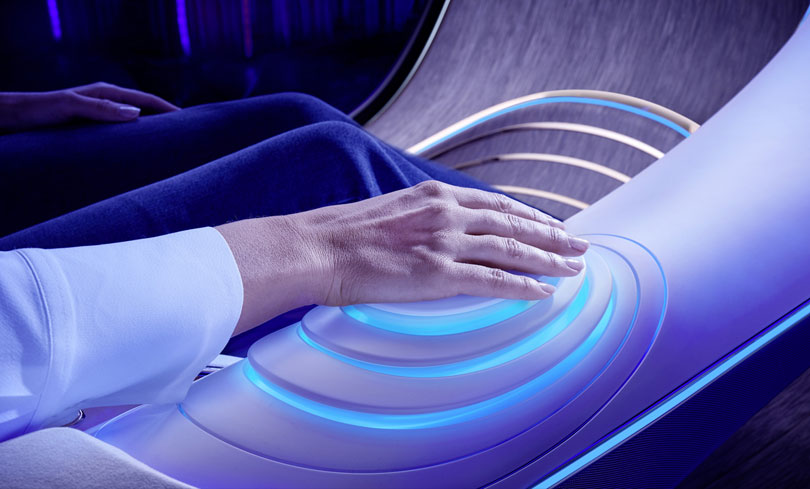
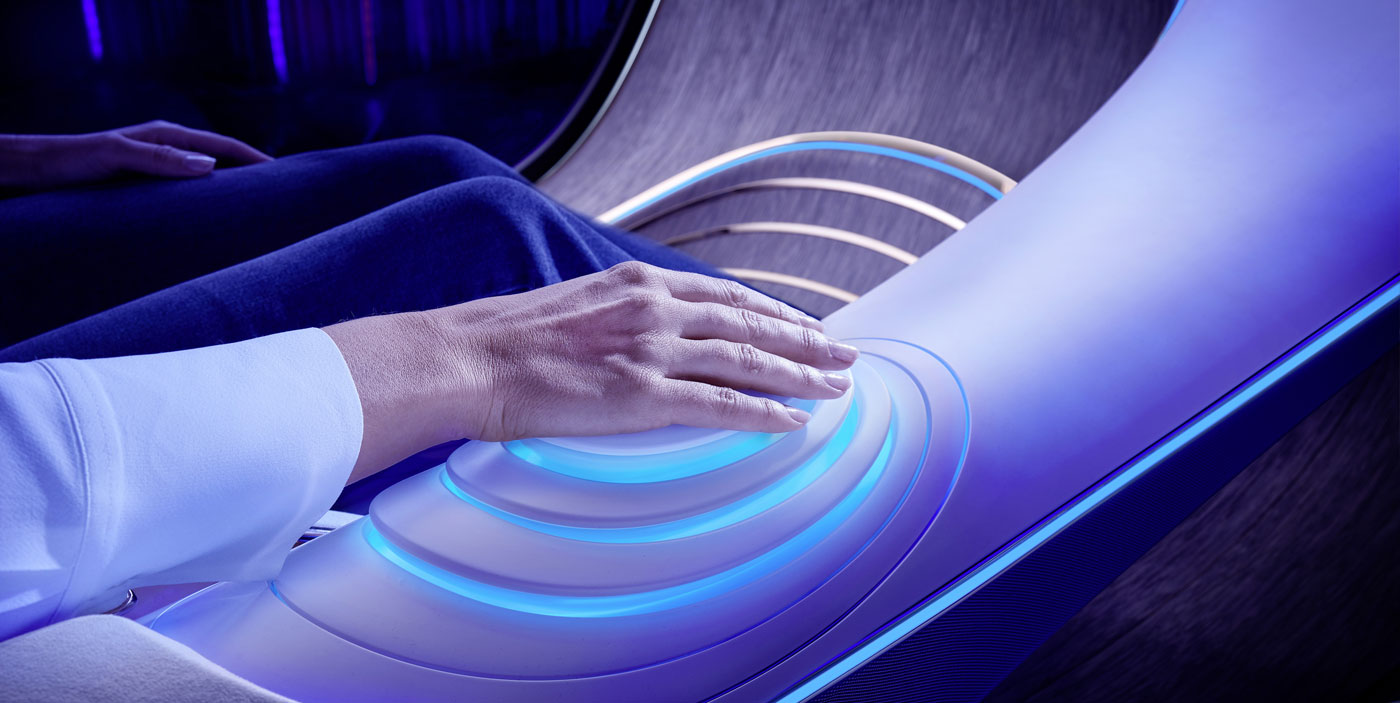
The control unit is a multifunctional (polyvalent) interface that allows human and machine to merge. It is also used to control the VISION AVTR, either by the driver's or the passenger’s seat. The device can be raised or lowered by a short tap if necessary – so the control unit is only visible when it is needed. Depending on the mood and vitality of the driver, the car offers different driving options: In comfort mode, the vehicle is autonomous. Optionally, the control unit is driven up to half, so that the driver can influence the speed. If the driver wants to have full control of the vehicle, the control unit can be completely lifted for steering.
The vehicle as an immersive experience space
The visual connection between passengers and the outside world is created by the curved display module, which replaces a conventional dashboard. The outside world around the vehicle and the surrounding area is shown in real-time 3D graphics and at the same time shows what is happening on the road in front of the vehicle. Combined with energy lines, these detailed real-time images bring the interior to life and allow passengers to discover and interact with the environment in a natural way with different views of the outside world. Three wonders of nature – the Huangshan Mountains of China, the 115-meter-high Hyperion Tree found in the United States and the pink salt Lake Hillier from Australia – can be explored in detail. Passengers become aware of various forces of nature that are not normally visible to the human eye, such as magnetic fields, bioenergy or ultraviolet light.
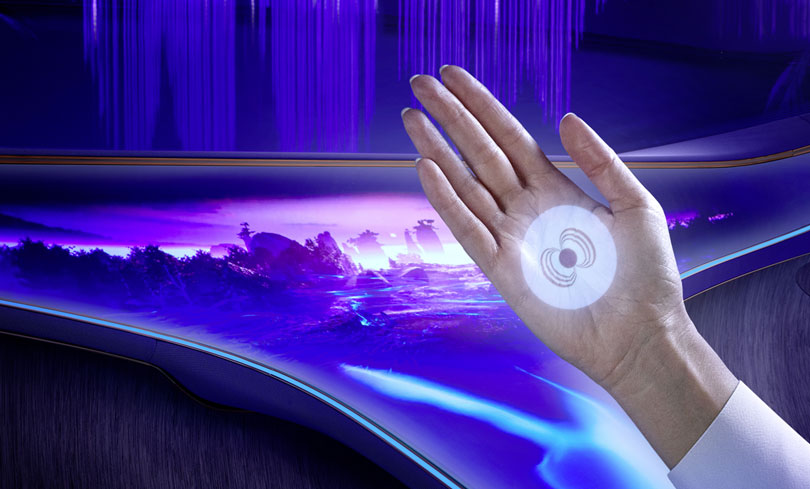
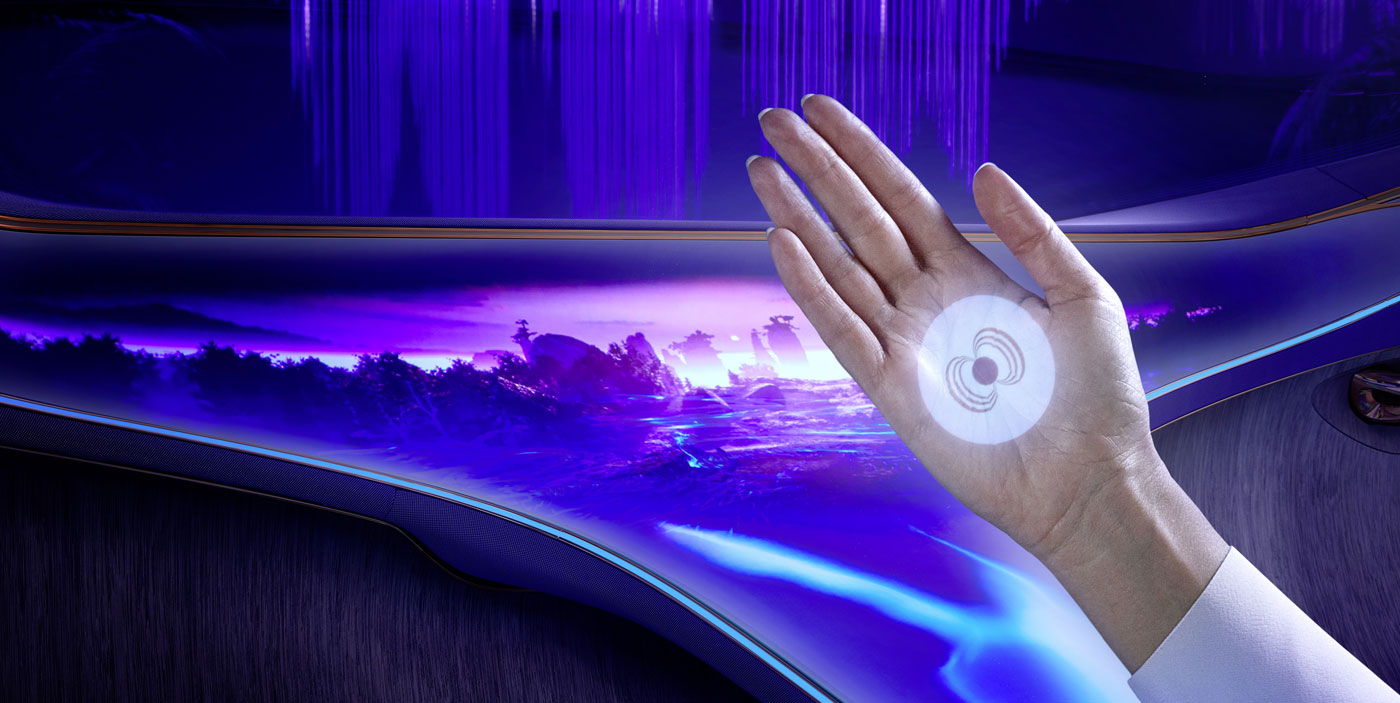
In the VISION AVTR, the interface adapts to the user – and not the other way around. By simply lifting the hand, an interface is projected onto the palm of the hand, allowing passengers to interact intuitively with the interior of the VISION AVTR. For example, through simple gestures, passengers choose the right ambient soundtrack or between different immersive experiences. This allows the world of Pandora to be explored within the VISION AVTR. In the process, one's own perspective merges with that of a banshee or a direhorse and the occupant experiences a flight or run through the Pandoran forest.
Extension of the senses through vibration and sound
The seats make the surroundings around the vehicle experienceable through haptic feedback. Vibrations adapted to the situation transmit information in a non-visual way and make objects noticeable. Each seat has eight exciters. These create vibrations that make the occupants feel the outside world or their own pulse. Supported by realistic 360-degree sound, reality and fiction merge into a unique experience. Lifelike sounds perfectly matched to the different situations let the passengers experience their surroundings directly. Due to the spatial 3D sound, a sound source can be precisely localized as in the wild. Completely intuitively, the user recognizes on which side of the vehicle, for example, a stream flows by or where bird voices sound. Instead of shielding the occupants from the outside world, the VISION AVTR brings the environment into the vehicle and strengthens the bond between human and nature.
Family in focus
The VISION AVTR automatically detects when a family is on board and adapts accordingly in its functions. For example, the front seats are connected to the rear seat via the Child Connect function. Monitors can be used to monitor the well-being of the children in the rear by the parents at the front. As a further connection between the front seats and the rear, the pulse of the front passengers on the back of their seats is visualized by light. This gives younger inmates in particular a sense of connectedness and security in the rear seats.
The so-called Magic Pool is integrated into the back of the front seats and offers learning-oriented gaming and a child-friendly augmented reality experience of the surroundings for the passengers in the rear. Interesting points along the route, such as mountains, rivers or sights, are presented informatively and age-appropriately.
Sustainability and Drive
Organic battery technology made of recyclable materials: For the first time, the VISION AVTR concept vehicle is using a revolutionary battery technology based on graphene-based organic cell chemistry that is completely clean of rare earths and metals. The materials of the battery are compostable and therefore completely recyclable. In this way, electric mobility becomes independent of fossil resources. As a result, Mercedes-Benz underlines the high relevance of a future circular economy in the raw materials sector.
The vehicle as a living creature: The 33 "bionic flaps" on the back of the vehicle are reminiscent of scales of reptiles. They can communicate with the driver and through the driver with their outside world by means of naturally flowing movements in subtle gestures. Due to the possibility to drive the front and rear axles in the same or opposite direction, the VISION AVTR can move sideways by approximately 30 degrees, in contrast to conventional vehicles. The so-called "crab movement" gives the concept vehicle an animal-like appearance also for its motions.
Sustainable materials: The seats of the VISION AVTR are refined by vegan DINAMICA® leather. DINAMICA® is the first and only microfiber that guarantees environmental sustainability throughout the entire production cycle. The floor is decorated with an innovative wood called Karuun®. The raw material for Karuun (Rattan) grows very fast as a natural raw material and is harvested by hand in Indonesia. The material gives the interior warmth and radiates naturalness.
